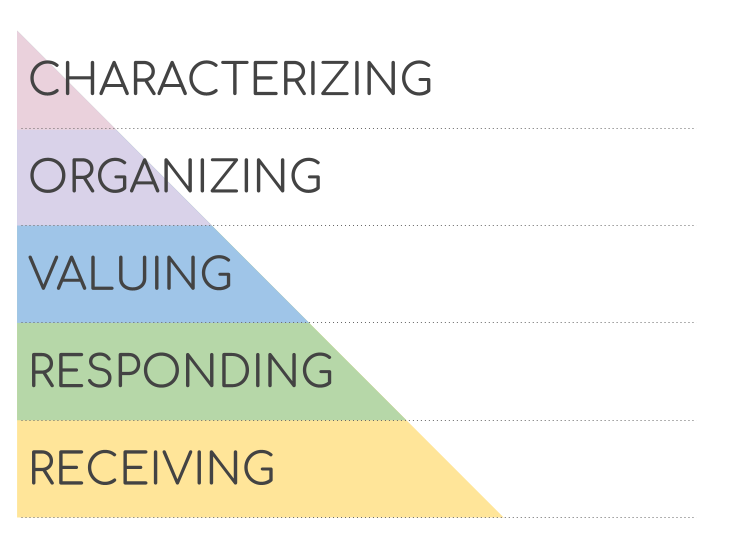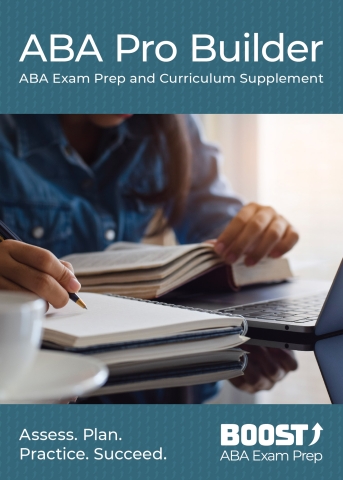
First Steps for Preparing for the BACB® Exam
Author: Corey Robertson, MS, BCBA
Part 2
Part 1: Intro to the Series
Part 2: First Steps for Preparing for the BACB® Exam
Part 3: Mock Exams for BCBA® Exam Prep
Part 4: Self-Management Strategies for BCBA® Exam Prep
Part 5: Study Methods that Work
Part 6: Beyond Rote Memorization
Part 7: 6 Ways to BOOST Your Study Time
Part 8: 10 Ways Your Friends and Family Can Help You Study for the BCBA® Exam
Part 9: Test-taking Strategies for the BCBA® Exam
Part 10: Conquering Test Anxiety with Behavioral Science
Achieving certification as a Board Certified Behavior Analyst® (BCBA®) or Board Certified Assistant Behavior Analyst® (BCaBA®) requires a degree, specific coursework in behavior analysis, and supervised fieldwork experience. Once students complete these requirements, they can apply to sit for the certification exam. If you are at this point in your journey, or close to it, you may be asking yourself some important questions:

“Okay, now what?”
“Where do I begin?”
“Am I prepared for the exam, and if not, what do I need to do?”
This article will provide some suggested tips for ensuring your competency so that you have the best chance of success on the exam.
What’s on the test?
The certification exams are based on the BACB®’s 5th edition task lists and (beginning in 2027) the 6th edition Test Content Outline (TCO). For the BCBA® and BCaBA® credentials, these documents represent the knowledge that will be tested on the exams. University programs are responsible for ensuring that coursework covers all of these objectives across the nine domains in courses that meet the current BACB® standards. (For a list of the 2027 standards, please see the March 2022 BACB® Newsletter.) However, professionals will want to ensure they have proficiency in each of these tasks at a level comfortable enough to ensure a passing exam score on the first attempt.
The objectives listed in the Task List/TCO are not as specific as the learning objective statements many behavior analysts are accustomed to, but looking at the verbs included will give a sense of the expected skills to be demonstrated. Examinees will be required to “explain,” “identify,” “distinguish,” “measure,” “select,” “apply,” “evaluate,” and “interpret” through multiple-choice exam questions.
Linking the tasks to content in academic courses, textbooks, and exam prep materials can help direct focus to areas of improvement. For example, ABA Technologies BOOST offers a Task-to-Text Tracker download and printable book tabs for the Cooper, Heron, and Heward text. (A version that compares Florida Tech's ABA Online Program Classes is also available.) This allows students to find resources relevant to each task quickly as they study.
Define, Distinguish, Demonstrate
 For each task, associated knowledge, skills, and abilities determine how a test question might assess that task. These correlate to Bloom’s taxonomy of learning and can be used to guide studying.
For each task, associated knowledge, skills, and abilities determine how a test question might assess that task. These correlate to Bloom’s taxonomy of learning and can be used to guide studying.
For example, the first task under the domain of Philosophical Underpinnings (5th Ed. Task List) or Behaviorism and Philosophical Foundations (6th Ed. TCO) requires professionals to:
A-1/A.1: Identify the goals of behavior analysis as a science (i.e., description, prediction, control).
Proficiency in this task would first require the professional to be able to define the terms “description,” “prediction,” and “control.” Next, they should be able to distinguish between examples and non-examples of each, comparing and contrasting the processes of description, prediction, and control. Finally, a competent behavior analyst would need to demonstrate this knowledge to solve a problem; for example, operationally defining a target behavior and observing a client in the natural setting (description) to develop a hypothesis as to the function of behavior (prediction), and implementing an intervention in such a way that changes in behavior can be attributed to the intervention (control).
SAFMEDS: the Key to Fluency
 Achieving fluency in vocabulary terms requires practice, which is where flashcards come in! SAFMEDS is an acronym for the steps to fluency practice: Say All Fast, Minute Every Day, Shuffle. A SAFMED trial involves seeing the vocabulary word and saying the definition, running through as many cards as possible in a minute, and then shuffling the deck before the next trial. In early trials, the learner will likely be reading the definition, but with practice, the learner should quickly recite the definition from memory when seeing the word. Track your rate-correct per minute, and for additional skill-building, graph your data. (A standard daily celeration chart would be great for this!)
Achieving fluency in vocabulary terms requires practice, which is where flashcards come in! SAFMEDS is an acronym for the steps to fluency practice: Say All Fast, Minute Every Day, Shuffle. A SAFMED trial involves seeing the vocabulary word and saying the definition, running through as many cards as possible in a minute, and then shuffling the deck before the next trial. In early trials, the learner will likely be reading the definition, but with practice, the learner should quickly recite the definition from memory when seeing the word. Track your rate-correct per minute, and for additional skill-building, graph your data. (A standard daily celeration chart would be great for this!)
Note: many students are tempted to look at the definition and say the word instead. Research has shown that when students learn to say the definition, they generalize the reverse relation (saying the word when shown the definition), but when a student only learns to say the word, they do NOT gain the ability to recite the definition. Perfect practice makes perfect! See our blog, Beyond Rote Memorization, and this SAFMEDS Tips Tool to maximize your SAFMEDS experience.
Distinguish, Discriminate, Differentiate
The next level of knowledge is comparing and contrasting different concepts, principles, and procedures. One of the most challenging distinctions in ABA (affectionately referred to by the author as “The Epic Battle”) is SDs vs EOs for reinforcement. Knowing the definitions and effects of discriminative stimuli and establishing operations is critical. However, correctly identifying and classifying them in the real world (or even in examples) is the next step. Creating your own examples and non-examples of concepts and getting feedback from a teacher, supervisor, or colleague can help ensure you are on the right track! There are many groups on social media where students of behavior analysis can practice skills and provide each other with feedback.
Practice, Practice, Practice

In addition to reviewing textbooks and study materials, students will want to build practice in responding to multiple-choice questions, either through mock exams or practice sets, such as those included in our ABA Pro Builder. Some questions might be at low levels in the taxonomy, merely testing a definition or single concept. Still, students will also want to practice with well-developed questions that require them to apply the concepts and skills. Products that include feedback and resource references will help students learn from their errors as they study. Strive for a high level of accuracy in each content area to feel confident for the exam: at least 80% in each area will increase the likelihood that you will be able to achieve a passing score on the certification exam.
Plan Ahead
Once the application for the exam is approved, the applicant will be able to schedule their exam. Having a date to aim for will allow you to plan a schedule of study activities. Think about the kinds of activities you want to engage in: perhaps starting with reviewing course materials and textbooks, then moving to exam prep products that involve practice over time, and finally taking mock exams to gauge your preparedness. Make a self-management plan and schedule to study a few hours a day, and before you know it, you will feel confident to take the last step in becoming a BCBA® or BCaBA®.











